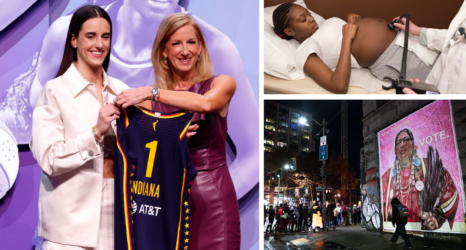More than 300,000 women left the labor force last month—the second time in the pandemic that the start of a new school year and loss of childcare has caused a major drop-off of women from the workforce.
This story originally appeared on The 19th.
September saw one of the largest dropoffs of women from the labor force since the pandemic began. The last time women left the workforce in such large numbers was in September 2020—and that’s not a coincidence.
The start of school during the pandemic has now coincided twice with significant job losses for women, underscoring that sectors disproportionately employing women continue to be hard hit and childcare centers are struggling. In September 2021, about 309,000 women left the labor force, meaning they were unemployed and not looking for work, according to new data released by the Bureau of Labor Statistics (BLS) Friday. All of the net gains in employment last month went to men. In September 2020, 863,000 women left the workforce.
The overall economy is feeling the strains—it added just 194,000 net jobs last month after a summer that averaged a million new jobs a month. (BLS does not collect data on nonbinary people, and does not have monthly data on Native Americans, Native Hawaiians and Pacific Islanders.)
The number of women in the labor force now is nearly identical to the number that were working or seeking work in July 2020, said economist Kathryn Anne Edwards. About 1.3 million men joined the workforce in that same time.
“The gains of the recovery are not lasting for women,” Edwards said. “This is not progress, this is treading water.”
One of the challenges for women is that public education was one of the industries that saw the most job loss in September. About 161,000 public education jobs were lost last month, in addition to 19,000 jobs in private education. BLS noted that the pandemic has made it difficult to make their typical measurement adjustments that take into account seasonal hiring in education. What’s clear, BLS said, is that the numbers for public education are lower than usual.
Some of that drop-off may also be driven by difficulty hiring for lower-paid positions in public education, such as bus drivers, substitute teachers and food service workers, positions that usually go to older workers who may be more concerned about getting sick at work, economist Elise Gould of the Economic Policy Institute said on Twitter.
The hospitality industry, which has been adding 350,000 jobs a month on average over the past six months and in August saw flat growth, added just 74,000 jobs in September. Employment in retail was also flat for the second straight month.
All three of those fields employ majority women—when all three have depressed job growth, women’s employment suffers. Surges in the number of coronavirus cases have led to closures of restaurants, hotels and other entertainment facilities and outbreaks at schools and childcare centers have shut down.
Any fluctuation in the availability of childcare—either through school or daycare—affects women’s ability to stay attached to the labor force, because women are more likely than men to take on caregiving responsibilities. Over the past several months, childcare centers across the country have reported that staffing difficulties are at a critical level, with many being unable to keep or even attract workers, leading to classroom closures.
The unemployment rate for women dropped across all racial and ethnic backgrounds, but for the wrong reasons. The pool of women working or looking for work fell, driving the overall rate down.
Unemployment rates continue to be significantly higher for Black women, at 7.3 percent, and Latinas, at 5.6 percent. White women’s unemployment rate is now 3.7 percent, nearly the same as March 2020 when the rate was 3.6 percent.
Up next:





